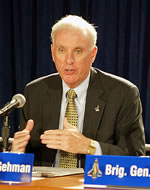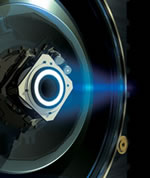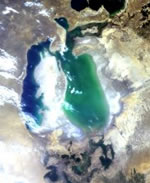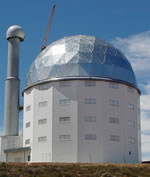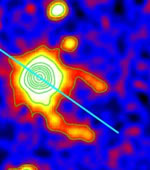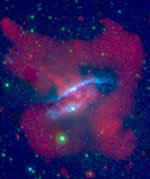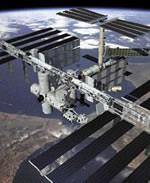
Image credit: NASA
Leaders from five of the world’s space agencies met in California this week and pledged to continue building the International Space Station, despite the delays and setbacks from the Columbia disaster. The five groups represented the US, Canada, Europe, Japan and Russia and they usually meet twice a year. Their next meeting is scheduled for October in Moscow to discuss the impact the Columbia accident investigation report will have on their plans.
Space agency leaders from the United States, Europe, Canada, Japan and Russia met today in Monterey California, to review the status of cooperation on the International Space Station (ISS) Program.
The meeting participants noted the significant milestone of the 1,000th day of permanent human presence aboard the ISS in a live telephone conversation with Expedition Seven Commander, Yuri Malenchenko, and NASA ISS Science Officer, Ed Lu, the cosmonaut and astronaut members of Expedition Seven. The Heads of Agency were briefed on the preliminary recommendations of the Columbia Accident Investigation Board and NASA’s plans for the return to flight of the U.S. Space Shuttle. They agreed to review and update the ISS Program Action Plan, adopted in December 2002, in order to realize the objectives of the ISS Program as soon as possible. The HOA agreed that the ISS Program Action Plan should remain the basis for proceeding with selection of an ISS configuration. The HOA also agreed to meet again in Moscow in mid-October to discuss specific ISS implementation plans taking into account NASA’s Return to Flight activities.
Appreciation was expressed for the strong support for the ISS Program by all Partner agencies, and in particular by the Russian Aviation and Space Agency, for resolutely providing for continuing human presence on the ISS after the tragic loss of the Space Shuttle Columbia and her courageous crew. The ISS partnership looks forward to continuing critical Russian support for general ISS operations, logistics and crew transportation and rescue capability until the Space Shuttle returns to flight and beyond. The Partners expressed great enthusiasm for NASA’s Return to Flight and the timely resumption of ISS assembly and opportunities for enhanced utilization of this world-class research facility.
Original Source: NASA News Release

